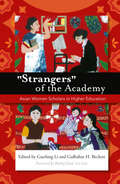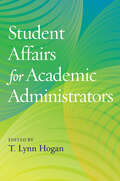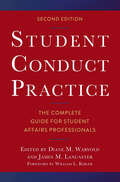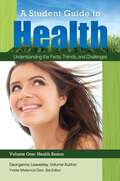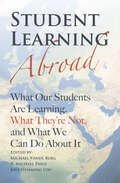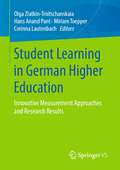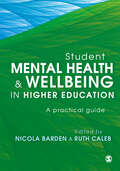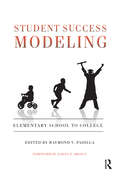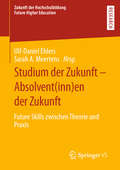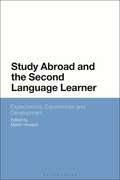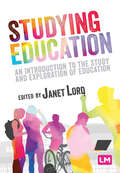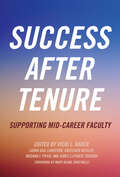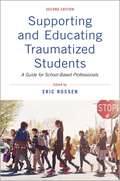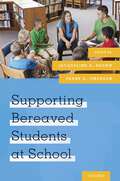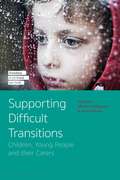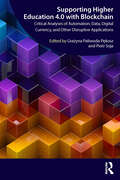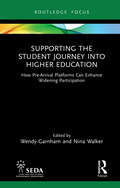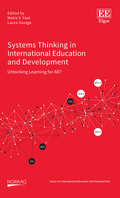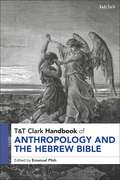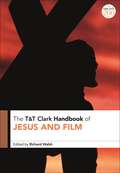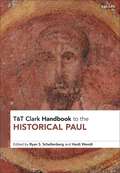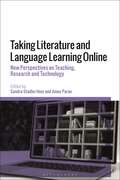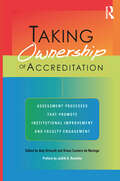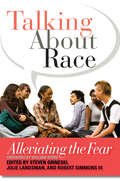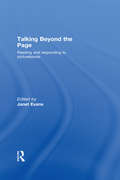- Table View
- List View
"Strangers" of the Academy: Asian Women Scholars in Higher Education
No less than other minorities, Asian women scholars are confronted with racial discrimination and stereotyping as well as disrespect for their research, teaching, and leadership, and are underrepresented in academia. In the face of such barriers, many Asian female scholars have developed strategies to survive and thrive. This book is among the first to examine their lived experience in Western academic discourses. It addresses the socio-cultural, political, academic, and personal issues that Asian female scholars encounter in higher education. The contributors to this book include first- and second-generation immigrants who are teachers and researchers in higher education and who come from a wide range of Asian nations and backgrounds. They here combine new research and personal narratives to explore the intersecting layers of relationships that impact their lives—language, culture, academic discourses, gender, class, generation, and race. The book is replete with the richness and complexity of these scholars’ struggles and triumphs in their professional and personal realms.This powerful and engaging volume:* Examines and celebrates the struggles and triumphs that Asian female scholars experience as they try to “make it” in academic environments that may differ sharply from the culture of their countries of origin; * Highlights the unique contributions the authors have made to research, theory, and the profession;* Establishes the authors’ claim to visibility and a voice for themselves and more generally for Asian women in the academy; * Opens a dialogue on these critical issues by sharing the academic and personal experiences of senior and junior scholars alike; and * Contributes to the on-going discussion on issues pertinent to the status of minority female scholars in higher education.
Student Affairs for Academic Administrators (An ACPA Co-Publication)
Co-published with In these days when every college or university needs to make the best use of resources, Student Affairs for Academic Administrators is intended to help academic administrators make the best use of one vital campus resource: student affairs. By providing this concise introduction to student affairs as a discipline and a profession, the authors of this volume provide a foundation for working together to improve the student experience and enhance learning. Since academic administrators typically come up through the faculty ranks, they are unlikely to have a good grasp of what their student affairs colleagues bring to the common work of education. To provide a better understanding, the chapters in this volume cover topics such as: • The history of student affairs, and functions typically associated with student affairs divisions; • Current thinking and research in student development theory; • Theoretical constructs underlying contemporary student affairs practice (and ways to employ these theories in academic administration); • Diversity issues and their impact on student outcomes in the collegiate environment.After a chapter on how to build successful collaborations between academic affairs and student affairs, two final chapters explore specific examples of how such collaborations work in practice: Academic honor codes, and undergraduate research. While written for academic administrators, the book also provides valuable insights for those in student affairs seeking to improve understanding and facilitate collaboration with colleagues in academic affairs.
Student Conduct Practice: The Complete Guide for Student Affairs Professionals
Since the publication of the first edition of Student Conduct Practice in 2008 the landscape of student conduct has matured and shifted dramatically. As the composition of the overall population and of the student body on campuses across the nation has changed, institutions of higher learning have a greater awareness of the importance of preparing students to function competently in a diverse society. They are seeing student behaviors, such as challenging mores, rules and policies, that reflect the growing polarization and complexity we see in our larger society, and such trends as a marked increase in student mental health challenges as well as changing social dynamics, all of which require a new awareness and a rethinking of policies and responses by conduct professionals, including embracing the a social justice as a lens by which we perform our work.This updated and considerably expanded edition maintains the objectives of the first--to constitute a compendium of current best practices in the administration of student conduct, to summarize the latest thinking on key issues facing practitioners today, and to provide an overview of the role and status of conduct administrators within their institutions.This text invites student conduct administrators to examine current programs and policies to ensure that the spaces that they create during interactions with students are spaces in which all students feel welcome and heard. As we strive to prepare students not only to be productive members of today’s workforce, and more importantly to be good people and upright citizens, this text accentuates the delicate balance between responding to regulatory mandates and meeting the educational aims of student conduct. The aim is to offer those with an interest in student conduct and those professionals who are new or seasoned student conduct administrators with both a compendium of chapters on best practices and the background to grapple with the thought-provoking situations they will encounter. In close collaboration with the leadership of the Association for Student Conduct Administration (ASCA) the editors identified the most pressing conduct issues on our campuses and practitioners and faculty who offer related expertise and a necessary diversity of voices.This is also available as a set with Reframing Campus Conflict, Second Edition.
A Student Guide to Health [5 volumes]: Understanding the Facts, Trends, and Challenges [5 volumes]
This comprehensive, five-volume reference set is aligned with the National Health Education Standards, containing up-to-date, scientifically based information on a variety of health and wellness topics relevant to high school students.A Student Guide to Health: Understanding the Facts, Trends, and Challenges provides straightforward, factual, and accessible information about a multitude of health issues. It is an essential reference set that provides high school students, teachers, and administrators with a comprehensive health and wellness education resource that aligns with National Health Education Standards and common health curriculum. This expansive five-volume set is ideal for students' research projects; highly useful as a resource for community college and public library patrons, librarians, teens, and parents; and is a suitable supplement to any health education curriculum.Each chapter includes up-to-date, evidence-based information that provokes further examination and encourages critical thinking to evaluate the validity of information encountered about health and wellness topics. Each chapter provides an abundance of references and lists of resources for further information, including books, articles, websites, organizations, and hotlines. Special attention is paid to social trends that affect youth health and wellness, such as bullying, eating disorders, steroid abuse, sexting, and the peer pressure associated with drug use and abuse.
Student Learning Abroad: What Our Students Are Learning, What They’re Not, and What We Can Do About It
A central purpose of this book is to question the claims commonly made about the educational benefits of study abroad. Traditional metrics of enrollment increases and student self-report, and practices of structural immersion, are being questioned as educators voice growing uncertainty about what students are or are not in fact learning abroad. This book looks into whether these criticisms are justified—and what can be done if they are.The contributors to this book offer a counter-narrative to common views that learning takes place simply through students studying elsewhere, or through their enrolling in programs that take steps structurally to “immerse” them in the experience abroad.Student Learning Abroad reviews the dominant paradigms of study abroad; marshals rigorous research findings, with emphasis on recent studies that offer convincing evidence about what undergraduates are or are not learning; brings to bear the latest knowledge about human learning and development that raises questions about the very foundations of current theory and practice; and presents six examples of study abroad courses or programs whose interventions apply this knowledge. This book provokes readers to reconsider long-held assumptions, beliefs and practices about teaching and learning in study abroad and to reexamine the design and delivery of their programs. In doing so, it provides a new foundation for responding to the question that may faculty and staff are now asking: What do I need to know, and what do I need to be able to do, to help my students learn and develop more effectively abroad? Contributors:Laura BathurstMilton BennettGabriele Weber BosleyJohn EngleLilli Engle Tara HarveyMitchell HammerDavid KolbBruce La Brack Kris Hemming LouKate McClearyCatherine MenyhartR. Michael PaigeAngela PassarelliAdriana Medina-López PortilloMeghan QuinnJennifer Meta RobinsonRiikka SalonenVictor SavickiDouglas StuartMichael Vande BergJames ZullWhile the authors who have contributed to Student Learning Abroad are all known for their work in advancing the field of education abroad, a number have recently been honored by leading international education associations. Bruce La Brack received NAFSA’s 2012 Teaching, Learning and Scholarship Award for Innovative Research and Scholarship. Michael Paige (2007) and Michael Vande Berg (2012) are recipients of the Forum on Education Abroad’s Peter A. Wollitzer Award.
Student Learning in German Higher Education: Innovative Measurement Approaches and Research Results
This book offers a comprehensive overview of current, innovative approaches to assessing domain-specific and generic student learning and learning outcomes in higher education. The presented work from all projects of the KoKoHs program, the most significant research initiative in German higher education since 2011, describes established tools and empirical results.
Student Mental Health and Wellbeing in Higher Education: A practical guide
Good mental health is essential for students to manage the challenges that university life presents. This book offers pragmatic guidance to support academic and student services staff in engaging with this critical issue, both in terms of being proactive within their role to promote a positive approach to wellbeing, and understanding how to care appropriately for students who may not be flourishing in the university environment. Key topics include: · The pressure points and transitions of student life · The crucial role of departmental and academic staff · How to make mental health policies work · The legal obligations and limits of student support · Creating the conditions for confident support
Student Success Modeling: Elementary School to College
This book focuses on one of the key questions in education: What determines a student’s success?Based on twenty years of work on student success, Ray Padilla here presents two related models he has developed that both provide a framework for understanding success and indicate how it can be enhanced and replicated. The research and theory that inform his models are covered in detail.He defines student success simply as progress through a program of study, such that the student and others expect him or her to complete it and be promoted to the next level or graduate. Rather than focusing on the reasons for failure or drop out, his approach focuses on understanding the factors that account for student success and that enable many students, some of them under the most challenging circumstances, to complete all program requirements and graduate. The models provide schools and colleges with an analytical tool to uncover the reasons for student success so that they can develop strategies and practices that will enable more students to emulate their successful peers. They address the characteristics of the students—such as motivation and engagement, the ability to surmount barriers, and persistence—and similarly surface the characteristics of teachers, the educational institution, its resources, and the contexts in which they interact. The process provides administrators with a clear and appropriate strategy for action at the level of each individual unit or subpopulation. Recognizing the need to develop general models of student success that also can be applied locally to specific situations and contexts, the book presents Padilla’s Expertise Model of Student Success (EMSS) that can be applied to general populations, as well as the Local Student Success Model (LSSM) that can be used to drive local institutional strategies to improve student success.The book demonstrates how the models have been applied in settings as diverse as a minority high school, a community college, and an Hispanic Serving Institution, and for such purposes as comparing a high-performing and a non high-performing elementary school. Contributors:* Kimberly S. Barker is an assistant professor at Texas A&M University-Kingsville, System Center San Antonio. She is currently working in the College of Education, Department of Curriculum and Instruction.* Mary J. Miller is the Instructional Compliance Director for the Edgewood Independent School District in San Antonio, Texas. Prior to this appointment, she served as an elementary school principal for ten years.* George E. Norton is the Assistant Vice President of Student Affairs for Admissions, Orientation & Transition Services at The University of Texas at San Antonio.* Ralph Mario Wirth is an administrator and director of educational planning at The San Antonio School for Inquiry and Creativity, as well as lead researcher for the Democratic Schools Research Institute, Inc.
Studium der Zukunft – Absolvent: Future Skills zwischen Theorie und Praxis (Zukunft der Hochschulbildung - Future Higher Education)
In diesem Sammelband berichten zehn ausgewählte Organisationen, wie sie mit dem Future Skills Turn umgehen, welche Future Skills in Zukunft wichtig sind, wie sie diese bei ihren Mitarbeitern fördern und welche Erwartungen sie an Hochschulen haben. Im Rahmen der NextSkills Initiative wurde mit Unternehmenspartnern, öffentlichen Organisationen und Hochschulen ein international einzigartiges Modell für Future Skills entwickelt. Es basiert auf dem Triple Helix Konzept für zukünftige Handlungsfähigkeit. Die Beiträge zeigen die Zukunft hybrider Studienformen zwischen Theorie und Praxis, wie dem dualen Studium. Es werden Praxisbeispiele für Methoden zum Umgang mit dem Future Skills Turn vorgestellt.
Study Abroad and the Second Language Learner: Expectations, Experiences and Development
Situated at the interface between study abroad and second language acquisition research, this book adopts a threefold thematic focus to study abroad and the language learner, investigating learner beliefs about study abroad, learner experiences of study abroad in relation to a range of individual, cultural and social factors, and the nature of learner development while abroad at an intercultural, personal and linguistic level. Chapters present studies of learners in different geographical contexts, with different first and second language combinations. The studies draw on different methodologies, incorporating quantitative, qualitative and mixed-method approaches. Presenting findings with implications for learner preparation, expectations and support during study abroad, and highlighting developmental issues within second language acquisition, Study Abroad and the Second Language Learner will be of interest to all study abroad and second language acquisition researchers, as well as programme organisers, language instructors and other stake holders.
Studying Education: An introduction to the study and exploration of education
An introduction to the study and exploration of education. This book gives readers a strong introduction to what education is, the challenges it faces and how to study education at university and beyond. It also explores how educationalists research, engage with debate and explore particular themes and how this impacts on their practice. This book: Covers key themes, foundation knowledge and essential theory from across the education sector Supports students in knowing what to study and understand – and how to study and develop their understanding Helps readers to see the &‘bigger picture&’ of education Includes support for academic writing, critical exploration of themes, evaluating evidence and engaging with debates
Success After Tenure: Supporting Mid-Career Faculty
This book brings together leading practitioners and scholars engaged in professional development programming for and research on mid-career faculty members. The chapters focus on key areas of career development and advancement that can enhance both individual growth and institutional change to better support mid-career faculties.The mid-career stage is the longest segment of the faculty career and it contains the largest cohort of faculty. Also, mid-career faculty are tasked with being the next generation of faculty leaders and mentors on their respective campuses, with little to no supports to do so effectively, at a time when higher education continues to face unprecedented challenges while managing continued goal of diversifying both the student and faculty bodies.The stories, examples, data, and resources shared in this book will provide inspiration--and reality checks--to the administrators, faculty developers, and department chairs charged with better supporting their faculties as they engage in academic work. Current and prospective faculty members will learn about trends in mid-career faculty development resources, see examples of how to create such supports when they are lacking on their campuses, and gain insights on how to strategically advance their own careers based on the realities of the professoriate.The book features a variety of institution types: community colleges, regional/comprehensive institutions, liberal arts colleges, public research universities, ivy league institutions, international institutions, and those with targeted missions such as HSI/MSI and Jesuit.Topics include faculty development for formal and informal leadership roles; strategies to support professional growth, renewal, time and people management; teaching and learning as a form of scholarship; the role of learning communities and networks as a source of support and professional revitalization; global engagement to support scholarship and teaching; strategies to recruit, retain, and promote underrepresented faculty populations; the policy-practice connection; and gender differences related to key mid-career outcomes.While the authors acknowledge that the challenges facing the mid-career stage are numerous and varying, they offer a counter narrative by looking at ways that faculty and/or institutions can assert themselves to find opportunities within challenging contexts. They suggest that these challenges highlight priority mentoring areas, and support the creation of new and innovative faculty development supports at institutional, departmental, and individual levels.
Supporting and Educating Traumatized Students: A Guide for School-Based Professionals
Traumatic or adverse experiences are pervasive among school-aged children and youth. Trauma undermines students' ability to learn and manage their feelings, behavior, and relationships. Meanwhile, school-based professionals often struggle with responding to the complex needs of traumatized students within the typical school day. The second edition of Supporting and Educating Traumatized Students is designed for professionals in mental health and education settings, and combines content and expertise from experts in the fields of education, school psychology, school administration, resilience, and trauma into one comprehensive guide. The book provides a thorough background on current research in trauma and its impact on school functioning; administrative and policy considerations; and a broad set of practical and implementable strategies for adapting instruction, modifying the classroom environments, and building competency for students and staff. New chapters address topics such as post-traumatic growth, interpersonal violence, and trauma screening and assessment among others. Educators can continue to use this updated edition as an ongoing resource, with the ability to quickly and easily access a variety of school-based strategies to help improve educational and social outcomes for traumatized students.
Supporting Bereaved Students at School
Supporting Bereaved Students at School provides educational professionals with essential information to support bereaved students. The book specifically targets helping children and adolescents cope with their emotional, physical, and social reactions during the period of grief, lasting for months or years, following a significant death in their lives. Chapters focus on foundational knowledge and offer a range of evidence-based intervention strategies, integrating school-based best practices throughout. This contemporary and informative guide provides tools that can be easily integrated into daily practice and will be especially useful for school-based professionals and graduate students in the fields of school psychology, school counseling, school social work, and clinical child psychology.
Supporting Difficult Transitions: Children, Young People and their Carers (Transitions in Childhood and Youth)
The international contributors to Supporting Difficult Transitions discuss examples of transitions that are problematic for children, young people and their carers. Focusing on vulnerable children and young people, the transitions include: starting school, changing schools, starting work, entering a new culture or a culture that has been changed to focusing on vulnerable children and young people. The book will be useful to practitioners involved in supporting children and their carers as they make these moves; students and course tutors in the caring professions; researchers; and policy makers and those who implement policy for children and young people. The different case examples are given coherence by drawing on cultural-historical approaches to how people move between practices. Particular attention is paid to how practitioners can build shared understandings of what matters for children and young people and for the institutions they are entering. These understandings become a resource to strengthen collaborations between practitioners or between practitioners and the children and their carers, as they support entry into new practices.
Supporting Higher Education 4.0 with Blockchain: Critical Analyses of Automation, Data, Digital Currency, and Other Disruptive Applications
This book explores the current and future impacts of blockchain technologies, such as cryptocurrency, on the education system. Blockchain is a disruptive technology based on a shared, distributed ledger, where transactions are registered by consensus in a network of peers, using cryptographic mechanisms that render the records virtually immutable and, ideally, enable transparency, auditability, and resilience. What role, then, could it play in fostering transformative approaches such as student-centred teaching and learning, distributed learning environments, and lifelong learning? This book provides essential perspectives into blockchain applications and challenges within education and offers a broader view of blockchain technology against existing information and communication technologies used in education. Spanning the effects on institutions, students, and the labor market, these chapters offer critical reviews and analyses of current research, practical first-hand applications of blockchain in education, and original conceptual models.
Supporting the Student Journey into Higher Education: How Pre-Arrival Platforms Can Enhance Widening Participation (SEDA Focus Series)
This book will provide an in-depth look at the development, functionality and appeal of pre-arrival platforms to aid transition into higher education, including a range of provisions.Ensuring a smooth transition into higher education study is increasingly seen as key to both retention and success, both in the initial weeks of study and beyond. Pre-arrival platforms offer students a range of opportunities, which might include the chance to familiarise themselves with the practices and policies of their new institution before teaching begins. This book will explore these platforms from three different angles: their development, use and appeal to diverse audiences in higher education, and case studies illustrating their incorporation into practice. It will provide a comprehensive overview of not only the different ways in which such platforms add value to the transition process but also the way they embrace diversity and widening participation in higher education from the very beginning of an individual’s higher education career. With chapters written by individuals from a variety of roles in higher education, this text will also provide the reader an insight into issues arising from the use of these platforms.It will be essential reading for educational, academic and staff developers working with departments and their institutions to develop their support structure for new students as well as for those directly involved in widening access/participation programmes.
Systems Thinking in International Education and Development: Unlocking Learning for All? (NORRAG Series on International Education and Development)
The global education crisis is a complex problem that requires change from teachers, school managers, civil society, implementers, planners, governments and donors. Addressing the issues that lie beneath this crisis requires new ways of working. Systems thinking is a suite of approaches to grappling with complex problems that is beginning to gain traction in international education. This book brings together new research in the nascent field of systems thinking in international education.Outlining the implications that systems thinking can hold for future research, practice and progress towards Sustainable Development Goal 4, a diverse range of leading scholars, policymakers and practitioners present novel research to encourage the shift from a linear view of change to a systems view. Chapters present diverse approaches to applying systems thinking in education across middle- and low-income countries, alongside research on how this has changed mindsets more widely. Questioning notions such as scaling and the universal applicability of ‘what works’, authors here suggest that locally relevant evidence and systemic rewards for using it are necessary to achieve SDG 4. This innovative book exemplifies how systems thinking offers the tools, frameworks and concepts to improve outcomes in education systems.With the education crisis further exacerbated by the COVID-19 pandemic, this timely book is essential reading for all those concerned with education and sustainable development goals. This thought-provoking book should be read by all those working to achieve SDG4; those whose day jobs inspire them and who look to their bookshelves for new ideas.
T&T Clark Handbook of Anthropology and the Hebrew Bible
This handbook presents an overview of the main approaches from social and cultural anthropology to the Hebrew Bible. Since the late 19th century, biblical scholarship has addressed issues and themes related to biblical stories from a perspective which could now be considered socio-anthropological. It is however only since the 1960s that biblical scholars have started to produce readings and incorporate analytical models drawn directly from social anthropology to widen the interpretive scope of the social and historical data contained in the biblical sources. The handbook is arranged into two main thematic parts. Part 1 assesses the place of the Bible in social anthropology, examines the contribution of ethnoarchaeology to the recovery of the social world of Iron Age Palestine and offers insights from the anthropology of the Mediterranean for the interpretation of the biblical stories.Part 2 provides a series of case studies on anthropological themes arising in the Hebrew Bible. These include kinship and social organisation, death, cultural and collective memory, and ritualism. Contributors also examine how the biblical stories reveal dynamics of power and authority, gender, and honour and shame, and how socio-anthropological approaches can reveal these narratives and deepen our knowledge of the human societies and cultural context of the texts. Bringing together the expertise of scholars of the Hebrew Bible and Biblical Archaeology, this ethnographic introduction prompts new questions into our understanding of anthropology and the Bible.
T&T Clark Handbook of Jesus and Film (T&T Clark Handbooks)
The T&T Clark Handbook of Jesus and Film introduces postgraduate readers to the critical field of Jesus and/on film. The bulk of biblical films feature Jesus, as protagonist, in cameo, or as a looming background presence or pattern. The handbook assesses the field in light of the work of important biblical film critics including chapters from the leading voices in the field and showcasing the diversity of work done by scholars in the field. Movies discussed include The Passion of the Christ, The King of Kings, Jesus of Nazareth, Monty Python's Life of Brian, Son of Man, and Mary Magdalene. The chapters range across two broad areas: 1) Jesus films, understood broadly as filmed passion plays, other relocations of Jesus, historical Jesus treatments, and Jesus adjacent cinema (privileging invented characters or “minor” gospel characters); and 2) other cinematic Jesuses, including followers who imitate Jesus devotionally or aesthetically, (Christian) Christ figures, antichrists, yet other messiahs, and competing Jesuses in a pluralist world. As one leaves the confines of Christian theology, the question of what a film or interpreter is doing with Jesus or Christ becomes something to be determined, not necessarily something traditional.
T&T Clark Handbook to the Historical Paul (T&T Clark Handbooks)
The T&T Clark Handbook to the Historical Paul gathers leading voices on various aspects of Paul's biography into a thorough reconsideration of him as a historical figure. The contributors show how recent trends in Pauline scholarship have invited new questions about a variety of topics, including his social location, his mode of subsistence, his cultural formation, his place within Judaism, his religious experience and practice, and his affinities with other religious actors of the Roman world. Through careful attention to biographical detail, social context, and historical method, it seeks to describe him as a contextually plausible social actor.The volume is structured in three parts. Part One introduces sources, methods, and historiographical approaches, surveying the foundational texts for Paul and the early Pauline tradition. Part Two examines key biographical questions pertaining to Paul's bodily comportment, the material aspects of his career, and his religious activities. Part Three reconstructs the biographical portraits of Paul that emerge from the letters associated with him, presenting a series of “micro-biographies” pieced together by leading Pauline scholars.
Taking Literature and Language Learning Online: New Perspectives on Teaching, Research and Technology
The use of literary texts in language classrooms is firmly established, but new questions arise with the transfer to remote teaching and learning. How do we teach literature online? How do learners react to being taught literature online? Will new genres emerge from the COVID-19 pandemic? Is the literary canon changing?This volume celebrates the vitality of literary and pedagogic responses to the pandemic and presents research into the phenomena observed in this evolving field. One strand of the book discusses literary outputs stimulated by the pandemic as well as past pandemics. Another strand looks at the pedagogy of engaging learners with literature online, examining learners of different ages and of different proficiency levels and different educational backgrounds, including teacher education. Finally, a third strand looks at the affordances of various technologies for teaching online and the way they interact with literature and with language learning. The contributions in this volume take literature teaching online away from static lecturing strategies, present numerous options for online teaching, and provide research-based grounding for the implementation of these pedagogies.
Taking Ownership of Accreditation: Assessment Processes that Promote Institutional Improvement and Faculty Engagement
This book demonstrates how a participatory approach to assessment and accreditation in their new forms creates a synergy for learner-centered education. It is a guide to approaching the accreditation process from a campus-wide perspective of ownership--illustrated by rich descriptions of how faculty, students, and administrators at California State University Monterey Bay engaged with and successfully focused their accreditation processes on the improvement of their practices. The approach that the authors describe was driven by a commitment to go beyond satisfying the accreditation expectations so as to promote ongoing and long-term improvement of student learning. It also reflects the shift of responsibility for assessment within institutions from a designated office to individual faculty and staff, entire departments, and the campus as a whole.The authors document strategies that are practical—ready to use or adapt—that are appropriate for all campuses. They also provide guidelines for the documentation process that accreditation demands. They demonstrate how they reduced traditional resistance to assessment by emphasizing its use for the improvement of student learning, helping faculty with their own teaching, and creating frameworks for continuing improvements that are valued by faculty.The authors emphasize the need for every institution to take into account its unique mission, vision, and core values; and to recognize the importance of individual departmental cultures. Although their accreditation "triggered" CSUMB’s engagement with assessment, the authors discuss other opportunities for jump-starting the process.
Talking About Race: Alleviating the Fear
What is it that gives many of us White people a visceral fear about discussing race?Do you realize that being able to not think about or talk about it is a uniquely White experience?Do you warn your children about how people might react to them; find store staff following or watching you; get stopped by the police for no reason?The students of color in your classroom experience discrimination every day, in small and large ways. They don’t often see themselves represented in their textbooks, and encounter hostility in school, and outside. For them race is a constant reality, and an issue they need, and want, to discuss. Failure to do so can inhibit their academic performance.Failure to discuss race prevents White students from getting a real, critical and deep understanding of our society and their place in it. It is essential for the well-being of all students that they learn to have constructive conversations about the history of race in this country, the impact of racism on different ethnic communities, and how those communities and cultures contribute to society. The need to model for our students how to talk openly and comfortably about race is critical in America today, but it is still an issue that is difficult to tackle.To overcome the common fear of discussing race, of saying “something wrong”, this book brings together over thirty contributions by teachers and students of different ethnicities and races who offer their experiences, ideas, and advice. With passion and sensitivity they: cover such topics as the development of racial consciousness and identity in children; admit their failures and continuing struggles; write about creating safe spaces and the climate that promotes thoughtful discussion; model self-reflection; demonstrate the importance of giving voice to students; recount how they responded to racial incidents and used current affairs to discuss oppression; describe courses and strategies they have developed; explain the “n” word; present exercises; and pose questions. For any teacher grappling with addressing race in the classroom, and for pre-service teachers confronting their anxieties about race, this book offers a rich resource of insights, approaches and guidance that will allay fears, and provide the reflective practitioner with the confidence to initiate and respond to discussion of race, from the pre-school and elementary classroom through high school.
Talking Beyond the Page: Reading and Responding to Picturebooks
Talking Beyond the Page shows how different kinds of picturebooks can be used with children of all ages and highlights the positive educational gains to be made from reading, sharing, talking and writing about picturebooks. With contributions from some of the world's leading experts, chapters in this book consider how:children think about and respond to visual images and other aspects of picturebooks children’s responses can be qualitatively improved by encouraging them to think and talk about picturebooks before, during and after reading themthe non-text features of picturebooks, when considered in their own right, can help readers to make more sense out of the bookdifferent kinds of picturebooks, such as wordless, postmodern, multimodal and graphic novels, are structuredchildren can respond creatively to picturebooks as art formspicturebooks can help children deal with complex issues in their livesTalking beyond the Page also includes an exclusive interview with Anthony Browne who shares thoughts about his work as an author illustrator.This inspiring and thought provoking book is essential reading for teachers, student teachers, literacy consultants, academics interested in picturebook research and those organising and teaching on teacher education courses in children’s literature and literacy.
